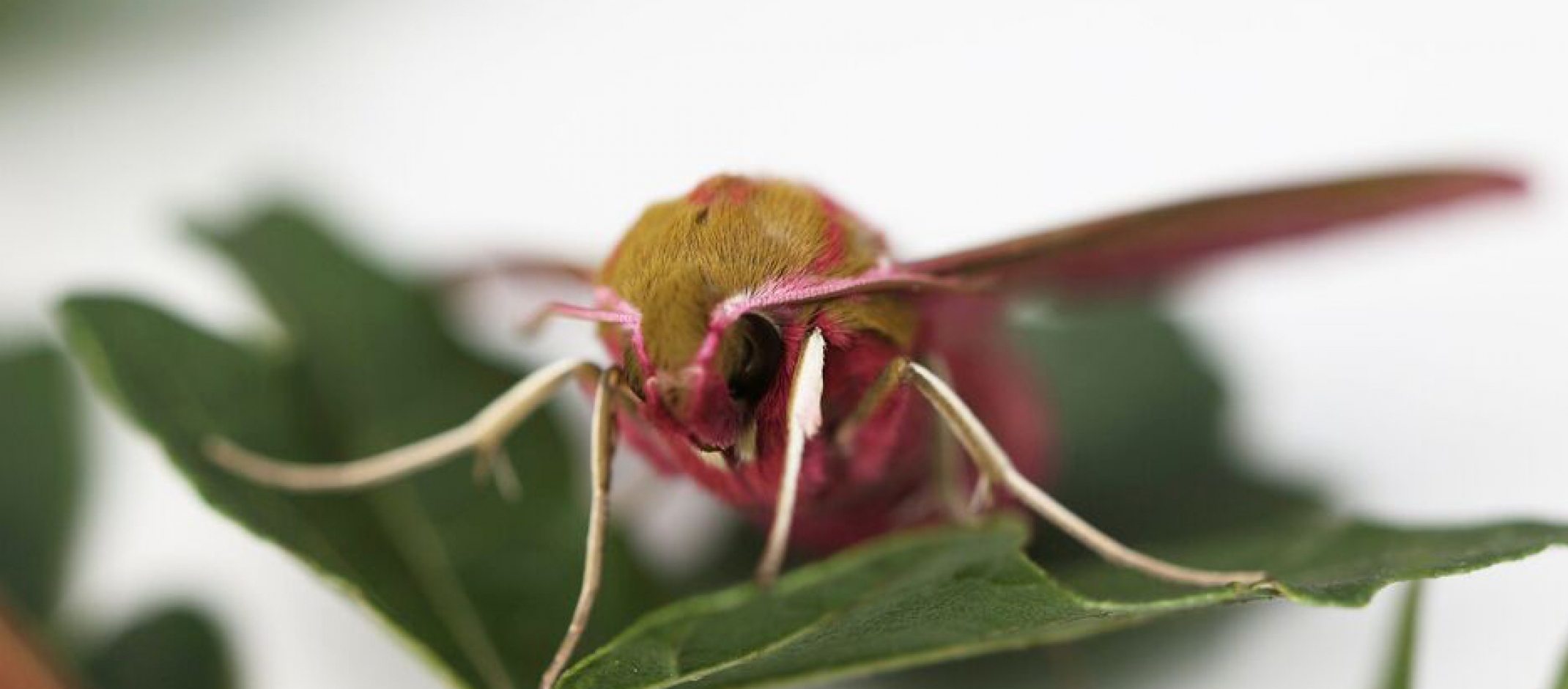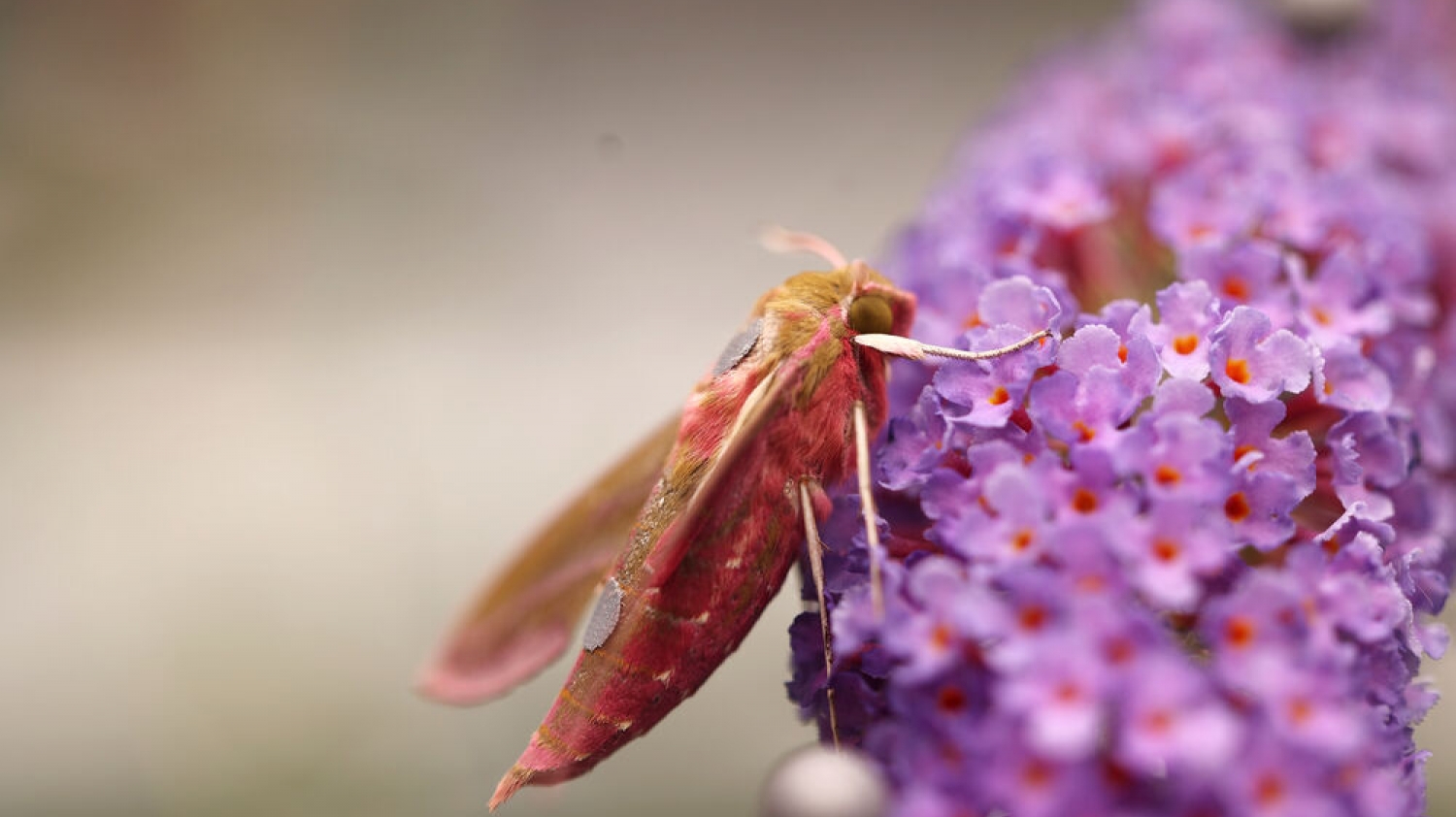Size makes all the difference

Insects such as moths are exposed to frequent changes in lighting conditions during their nocturnal flights. This occurs in their natural habitats, for example, when they fly from a clearing into the forest under a full moon. However, these fluctuations are many times greater when the animals fly through residential areas and suddenly encounter car headlights, street lamps and neon signs.
"Evolutionarily, the animals are not at all adapted to such strong fluctuations in brightness, as these do not occur in nature. Nevertheless, they have to cope with them in many of their natural habitats these days, which quickly takes their visual system and behaviour to its limits", says Konstanz biologist Anna Stöckl. Among other things, she is investigating which behavioural strategies animals use so that they are not completely helpless when facing such extreme changes in their sensory world.
Actively avoiding the extremes
If we humans are dazzled by a headlight at night, we can easily turn our heads away or squint our eyes to escape the glare. If we drive a car or ride a bike, we might also slow down until we can see adequately again.

"Animals, too, can actively determine what they perceive by adapting their behaviour and thus compensate for the extreme, human-made fluctuations in light to a certain extent, for example by keeping their distance from a light source or turning away from it."
Anna Stöckl
Anna Stöckl is a junior professor and the leader of an Emmy Noether research group at the University of Konstanz. For her project "DynamicVision", which focuses on the visually-guided flight of moths, she received a prestigious Starting Grant from the European Research Council amounting to 1.5 million euros.
However, researching these behavioural strategies in detail quickly brings about a whole number of technical problems, starting with the question of how they can be observed at all. Tagging insects with transmitters that would allow movement tracking via radio signals is not feasible in most cases due to the weight of the transmitters. Instead, video recordings are the method of choice, but here too the small size of insects has a decisive disadvantage: If details such as the animals' direction of gaze are to be visible on a recording, this works only in very small rooms.
Freedom of movement is the key
"To study the behaviour of moths in great detail using camera-based methods, we were previously limited to test chambers of around one cubic metre", says Stöckl. "As a result, we had to focus on very specific research questions because the animals cannot display the full range of their behavioural repertoire in such a small space". For example, the animals lack the freedom of movement to keep their distance from a light source or to accelerate to their maximum flight speed before reaching the next wall.
The Imaging Hangar at the University of Konstanz is now providing a solution to this problem. With close to 1,900 cubic metre, the behavioural laboratory is almost the size of a gymnasium. It is equipped with carefully coordinated cameras that cover the entire room and make it possible to track insect flight paths with millimetre precision and a temporal resolution in the millisecond range. The size of the laboratory gives the animals the space they need to behave naturally.
360° Imaging Hanger
Control and complexity combined
The actual test setup in the imaging hangar looks as follows: An elaborate lighting system enables the researchers to simulate various lighting conditions – from daylight to twilight, moonlight or starry skies. A few plants are placed on the ground, which the animals can fly to as targets for landing or feeding. In addition, artificial light sources such as spotlights or obstacles can be put in the room to create a more complex flight environment.
"For our experiments, we observe small groups of moths for a whole week. The lighting conditions change during the course of the day, just as they would in the open air. The only difference is that in this case we have full control – both over the light and the rest of the test environment", explains Stöckl. The camera system records the positions of the individual animals in the room at all times. This way, the Imaging Hangar combines the detailed control and observation possibilities of a laboratory with the advantages of a field trial, in which the animals have the necessary freedom of movement to behave naturally.
"The Imaging Hangar closes an important gap between laboratory experiments in very small spaces and field research. This does not mean that classic approaches are not justified. On the contrary, they are essential for the overall picture. And now the Imaging Hangar provides us with an important piece of the puzzle that had been missing."
Anna Stöckl
In their research project, Stöckl and her team can now formulate and test much more complex hypotheses and investigate a whole range of factors simultaneously: How fast do the animals move in different lighting conditions? What distances do they keep from obstacles and light sources? Are they distracted by artificial lights when approaching plants?
Breaking new ground
As these questions had not yet been investigated in a space the size of the Imaging Hangar, exciting and sometimes unexpected findings have emerged. The moths studied by Stöckl, for example, were anything but true to their proverbial mission of flying like moths to a flame. "We rarely saw the animals sitting near the light sources in the morning", reports Stöckl. And measuring the flight speeds also revealed astonishing facts: In the Imaging Hangar, the animals reach flight speeds that are much higher than anything previously measured in these moths. And they maintain these speeds even under weak lighting conditions. "This is something we would never have been able to observe without the Imaging Hangar", she says.
© Elisabeth BökerThe vine hawkmoth is a species of moth that Anna Stöckl is researching.
Anna Stöckl and her colleagues at the University of Konstanz are breaking new ground with laboratory experiments on this scale. For the next steps, however, they will return to the more traditional laboratory setting. "We want to find out how the animals' visual system supports the high flight speeds under low lighting conditions – how quickly does it process visual stimuli in the first place? For the electrophysiological studies on the animals' visual system, we do not need the Imaging Hangar", says Stöckl.
Not only suitable for nocturnal insects
In the meantime, the Imaging Hangar in Konstanz will not remain unused. There have been plenty of interesting questions that can be – or already have been – investigated for the first time using this special laboratory: From the dynamics of a swarm of locusts with more than 10,000 animals, to the optimization of leaf transport on a 30-metre-long ant trail, to the self-organization of robots that have been programmed with the behavioural rules of zebrafish.
As a core facility of the Konstanz Cluster of Excellence "Collective Behaviour", the Imaging Hangar and its equipment are available to both internal and external users for research purposes. The technical equipment is continuously maintained and expanded, and researchers receive technical support in implementing their experimental projects.
"The Imaging Hangar is changing the way we do behaviour research. It allows us at the University of Konstanz to redefine the limits of what is possible and to effectively connect neuroscience, behaviour research and robotics in powerful new ways. In the future, we plan to equip the Imaging Hangar with augmented and virtual reality for animals. We will soon be able to observe moths exploring virtual flowers."
Iain Couzin. Professor at the Department of Biology at the University of Konstanz, speaker of the Konstanz Cluster of Excellence "Collective Behaviour" and director of the Department of Collective Behavior at the Max Planck Institute of Animal Behavior.

